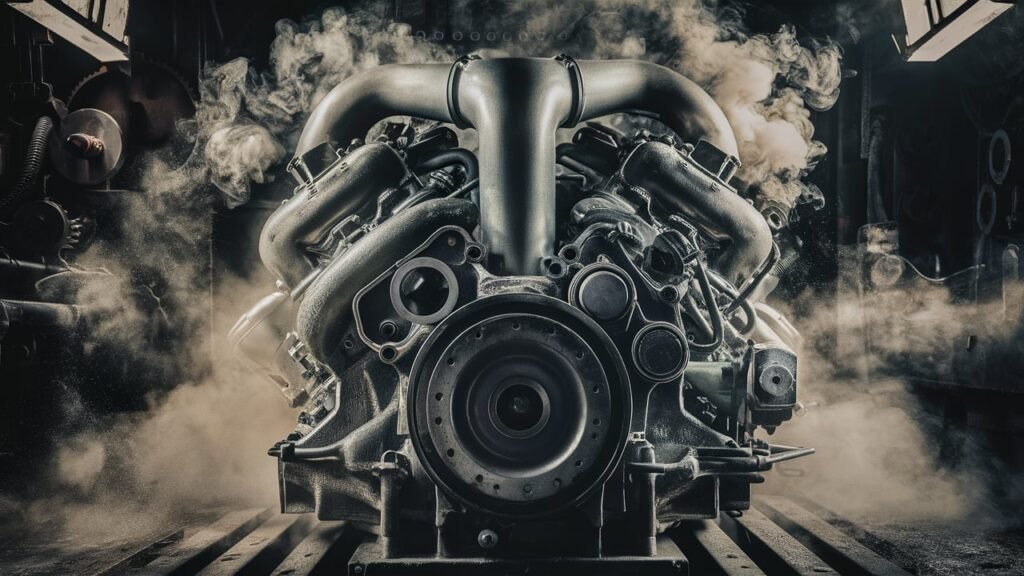
Engine Brake Fluid Status: Healthy?
Ensuring your safety on the road is not just about buckling up; it also extends beneath the hood of your vehicle. A key player in your car’s performance and, more importantly, its safety, is often overlooked – brake fluid.
Operating within a critical system that enables you to stop effectively and timely, brake fluid plays a pivotal role in maintaining control over your vehicle. Neglecting its health can have dire consequences for both you and your passengers. This article delves into why monitoring the condition of your engine brake fluid is paramount for optimal functioning and the prevention of potential hazards on the road.
Regular inspection and maintenance are non-negotiable when it comes to automobile upkeep, particularly concerning components as crucial as brake fluid. Impeccable brakes are not merely a convenience but a necessity to prevent accidents and ensure smooth driving experiences.
Being proactive rather than reactive can save you from expensive repairs down the line while guaranteeing that your vehicle responds promptly when needed most. By staying ahead of issues through routine checks, you can maintain peak performance levels and safeguard yourself against unforeseen mishaps caused by inferior brake fluid quality or contamination.
Discover how this one simple practice can significantly impact your vehicle’s reliability and safety in ways you may not have considered before.
Understanding Brake Fluid.
Brake fluid is a hydraulic fluid crucial for the proper functioning of a vehicle’s braking system. Its primary purpose is to transfer the pressure created when a driver presses the brake pedal to the brake calipers or wheel cylinders, initiating the process that slows down or stops the vehicle. This key role underscores the importance of maintaining high-quality brake fluid for optimal performance and safety on the road.
Common types of brake fluids used in cars include DOT 3, DOT 4, and DOT 5. Each type varies in chemical composition, boiling points, viscosity characteristics, and compatibility with certain braking systems. For instance, while DOT 3 brake fluid is glycol-based and widely used in many vehicles due to its cost-effectiveness, it has lower boiling points compared to DOT 4 which offers better performance at higher temperatures.

When subjected to high temperatures and pressures during braking, brake fluid must remain stable and maintain its properties to prevent air bubbles from forming in the system. Air bubbles can lead to spongy brakes or complete brake failure.
High-quality brake fluids are designed to have high boiling points to withstand these conditions without compromising their effectiveness in transferring force within the hydraulic system efficiently. Understanding how different types of brake fluids respond under varying stress levels can help drivers choose the most suitable option for their vehicles based on driving habits and environmental factors.
Signs of Unhealthy Brake Fluid.
Detecting the early signs of unhealthy brake fluid is crucial for maintaining optimal vehicle safety and performance. One warning sign that your brake fluid may be deteriorating is a change in color. Fresh brake fluid typically has a clear or slightly yellow appearance, but over time, it darkens as it absorbs moisture or contaminants.
If you notice a dark or cloudy hue in your brake fluid reservoir, it may indicate the need for immediate attention. Another visual clue to watch out for is sediment or particles present in the fluid, which could suggest contamination.
The effects of degraded brake fluid on braking performance can be alarming. One common issue resulting from deteriorating brake fluid is decreased responsiveness in your brakes. As the fluid degrades, it forms air bubbles or sludge that can compromise the hydraulic pressure needed for effective braking.
This reduction in braking efficiency can cause longer stopping distances and potentially lead to unsafe driving conditions. Understanding these effects underscores the importance of regular monitoring and maintenance of your brake fluid.
Moisture infiltration poses a significant threat to brake fluid quality over time. Brake systems are susceptible to moisture seeping into the system through microscopic pores in hoses and seals. Moisture-contaminated brake fluid lowers its boiling point, making it more prone to vapor lock during heavy braking situations, reducing braking effectiveness.
Consequently, drivers might experience spongy brakes or even complete brake failure if moisture content is not addressed promptly through proper maintenance measures like flushing and replacing the fluid at specified intervals.
Testing Brake Fluid Quality.
Testing the quality of your brake fluid is a crucial aspect of maintaining your vehicle’s braking system. There are several methods available to determine the condition and effectiveness of your brake fluid accurately. One common way is using test strips that change color based on the fluid’s moisture content or pH level. These test strips can provide a quick indication of whether your brake fluid requires attention.
While test strips can be convenient for a general assessment, for more precise results, it is essential to use professional equipment. Professional tools can measure key parameters such as boiling point, acidity levels, and contamination more accurately. Investing in these tools or visiting a mechanic for a thorough evaluation can help you better understand the health of your brake fluid with greater precision.
In terms of frequency, it is recommended to check the quality of your brake fluid regularly. For most vehicles, testing the brake fluid every 12 months or during routine maintenance checks is advisable.

However, if you notice any warning signs indicating potential issues with your brakes, such as spongy pedal feel or unusual sounds when braking, testing the brake fluid immediately becomes imperative to ensure continued safe operation of your vehicle. Regular monitoring will help detect problems early and prevent costly repairs down the line.
Ensuring that your brake fluid meets quality standards is vital for optimal braking performance and safety on the road. By employing proper testing methods and adhering to recommended schedules for checking and replacing brake fluid, you can maintain a healthy braking system that functions effectively when you need it the most – providing you with peace of mind while driving.
DIY Brake Fluid Inspection:
Performing a DIY brake fluid inspection can help car owners ensure their vehicle’s braking system operates at its best. Here is a step-by-step guide to assist you in checking your brake fluid at home. First, park your car on a level surface and allow the engine to cool down if it has been running recently.
Pop open the hood and locate the brake fluid reservoir, typically situated near the windshield on the driver’s side. Ensure the reservoir is clean, and wipe any dirt or debris around it before proceeding.
To inspect the brake fluid’s condition, you will need a clean cloth or towel to wipe off the cap and dipstick, ensuring no contaminants enter the reservoir. Use a flashlight to check the fluid level; it should be between the “min” and “max” marks.
Next, observe the color of the brake fluid: fresh brake fluid is almost clear with a slight yellow tint; however, if it appears dark brown or black, it may indicate contamination or degradation. Additionally, pay attention to any unusual odors emanating from the brake fluid as this could signal potential issues.
Interpreting test results from a DIY inspection is crucial for deciding on necessary actions. If you notice that your brake fluid is discolored, has particles suspended in it, or emits a burnt smell, these are signs that replacement may be needed.
In contrast, if the brake fluid looks clear with no visible impurities and smells normal, it indicates that your brake system might be in good condition. Remember, it’s always recommended to consult with a professional mechanic if you are unsure about interpreting your findings accurately or suspect significant problems with your brake system based on your inspection results.
Professional Brake Service.
When it comes to ensuring the optimal performance and safety of your vehicle, seeking professional help for a comprehensive brake system inspection is pivotal. Auto mechanics play a crucial role in diagnosing brake fluid issues accurately due to their expertise and access to specialized tools and diagnostic equipment.
In many cases, they can identify problems early on that may go unnoticed during casual DIY inspections. For instance, auto mechanics have the knowledge to detect subtle signs of brake fluid contamination or degradation that require immediate attention to prevent further damage.
During a routine brake checkup by professionals, a range of services is commonly offered to guarantee the reliability of your braking system. These services typically involve inspecting not only the condition of the brake fluid but also checking other vital components like brake pads, rotors, calipers, and hydraulic systems.

By conducting thorough assessments, auto mechanics can uncover underlying issues such as leaks, air bubbles in the brake lines, or worn-out parts that could compromise braking efficiency.
For example, during a typical brake service appointment, an auto mechanic might use pressure tests alongside visual inspections to assess both the quality of the brake fluid and the overall functionality of the braking system.
Moreover, professional brake services often include actions beyond mere diagnoses. Auto mechanics are trained to perform tasks like bleeding brakes to remove air pockets from the system, flushing out old contaminated brake fluid completely, and refilling with fresh fluid of the correct specification.
They ensure that these procedures are executed meticulously following manufacturer guidelines. By entrusting your vehicle to skilled professionals for routine inspections and maintenance involving brake fluids, you not only secure your safety but also extend the lifespan of your braking system.
This proactive approach helps prevent unexpected failures on the road due to neglected or improperly maintained brake fluid conditions.
Maintaining Healthy Brake Fluid.
To ensure your vehicle’s braking system operates at its best, it is crucial to maintain healthy brake fluid levels. One key guideline is to regularly check the brake fluid reservoir and top it up as needed with the manufacturer-recommended type of brake fluid.
Keeping an eye on the condition of the fluid visually can prevent issues like air pockets or low levels that could compromise braking efficiency. Additionally, avoiding contamination by ensuring the cap stays clean during top-ups is paramount in maintaining optimal brake performance.
The importance of flushing and replacing old brake fluid should not be underestimated. Over time, brake fluid absorbs moisture, which can lead to corrosion within the braking system components and a decrease in boiling point, impacting overall performance.
An industry-standard recommendation is to have your brake fluid flushed every 30,000 miles or every two years, regardless of mileage. By adhering to this schedule, car owners can safeguard their safety and prolong the life of their braking system components significantly.
Following a recommended servicing schedule for your vehicle’s braking system plays a vital role in keeping your brake fluid healthy. Professional auto mechanics can help determine when your braking system needs attention beyond mere topping up of fluids.
This holistic approach ensures that all parts associated with the braking mechanism are inspected and serviced accordingly. By entrusting professionals with regular maintenance checks, you not only extend the lifespan of critical components but also enhance driving safety for yourself and others on the road.
Conclusion: Ensuring Your Safety.
In conclusion, the health of your engine brake fluid is a critical factor in maintaining the safety and performance of your vehicle. By understanding the purpose of brake fluid, recognizing signs of deterioration, testing its quality regularly, and taking proactive measures to keep it healthy, you are not only safeguarding yourself but also other road users.
Brake fluid plays a pivotal role in ensuring responsive braking action, especially during emergency situations, making it imperative to prioritize its maintenance as part of your regular vehicle care routine.
Remember that neglecting your brake fluid can lead to detrimental consequences such as decreased braking efficiency, increased stopping distances, or even brake failure.
Whether you choose to conduct DIY inspections or seek professional assistance for comprehensive checks and servicing, the goal remains constant – to guarantee that your brake fluid is in optimal condition for consistent and reliable performance when you hit the road.
Safe driving starts with a well-maintained braking system, so make sure to include checking your brake fluid health in your vehicle maintenance checklist to enjoy worry-free journeys every time you drive.




